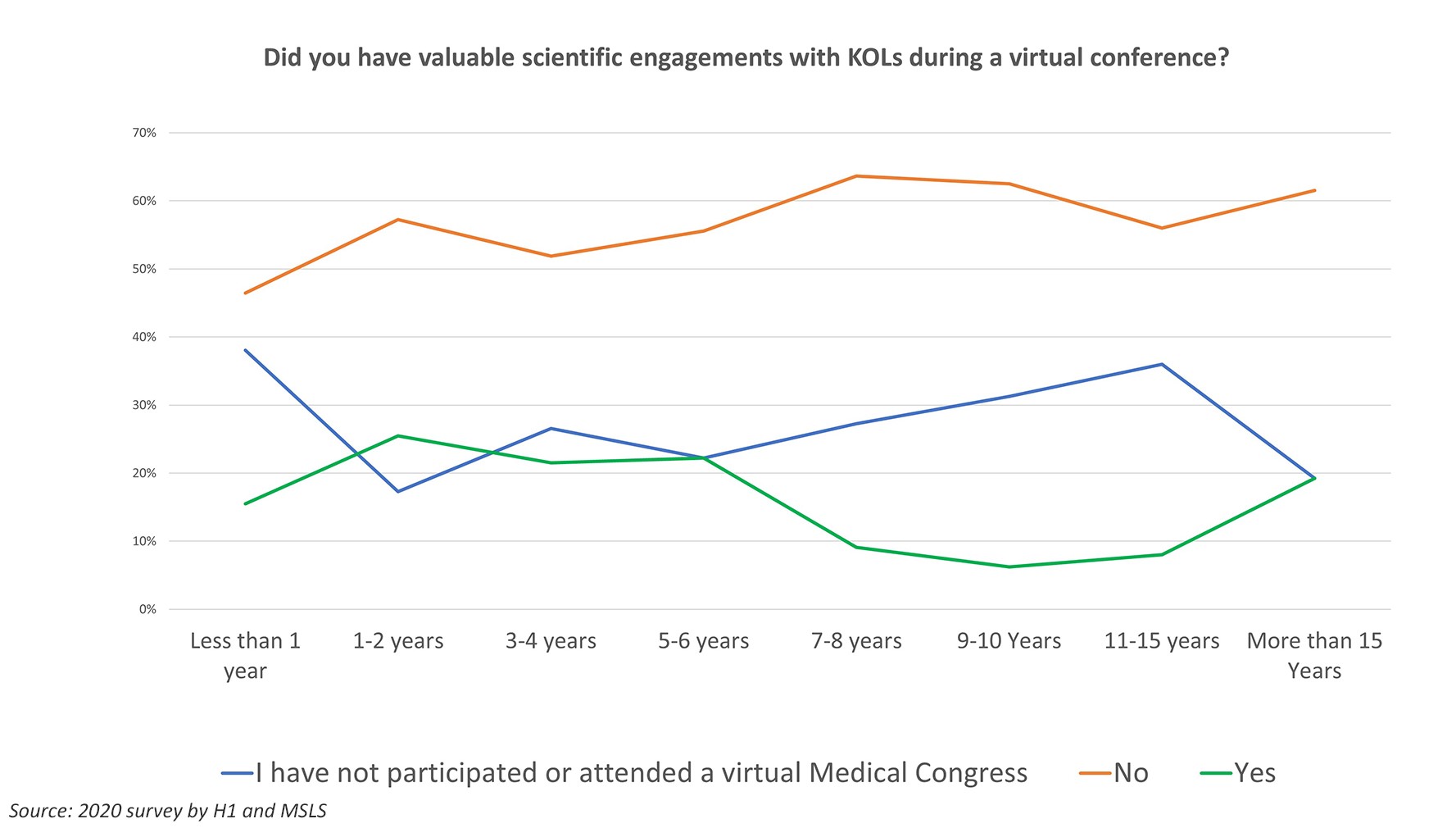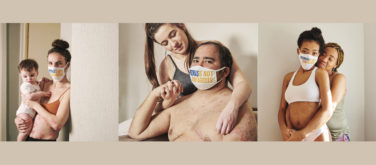A recent article in Nature1 revealed that 74% of scientists think that conferences should continue to be virtual or have a virtual component after the COVID pandemic. For 49%, better accessibility was the reason, 19% liked the lower cost, and an amazing 21% preferred the virtual format because it lowers the carbon footprint.
The biggest drawback identified by the 900 survey participants was poor networking opportunities.
Medical conferences have also gone full virtual. So what does this mean for medical affairs professionals?
First, Let’s Do the Numbers
In a recent survey2 we conducted with the Medical Science Liaison Society, we asked approximately 500 MSLs and MSL managers a series of questions related to virtual conferences. Roughly one in five participants said that they have not attended a virtual conference.
Of those who participated, only 18% said that they were able to have a valuable scientific engagement with KOLs during the meeting. Interestingly, brand-new MSLs (less than a year experience) and MSLs with between 7 and 15 years of experience were those who reported the least success with engagement. MSLs with some experience (1 to 6 years) as well as very experienced MSLs (15+ years) had better success.
 Overall, this late August 2020 survey is not a stellar endorsement for virtual conferences. Why is it so difficult to make these conferences work and what can companies, medical affairs groups, and MSLs do to improve the return on investment?
Overall, this late August 2020 survey is not a stellar endorsement for virtual conferences. Why is it so difficult to make these conferences work and what can companies, medical affairs groups, and MSLs do to improve the return on investment?
Virtual Conference Challenges
All virtual conferences—medical or other—suffer some of the same challenges:
- They change how people normally interact. At in-person conferences, attendees are a captive audience, mostly removed from the demands of professional and personal life and able to focus on the conference. Virtual conferences don’t manage to hold their audience captive in the same way, attendees tend to multitask and/or only enter the conference for cherry-picked sessions making it harder to connect.
- Especially early on, the new format created a lot of technical challenges for organizers and attendees alike which didn’t help with keeping the attention of the audience. As virtual conferences are getting more established this has improved.
- “Zoom fatigue” has set in by now making people reluctant to spend more time staring into a screen.
- Time zones keep people from attending synchronous sessions—who wants to get up at 4 am, even for an interesting talk?
For medical affairs, the issue of compliance at virtual conferences remains a headache, especially when they have to rely on the platform provided by the organizers.
Five Ways to Improve Your Strategy
Despite all that, virtual conferences also have some upsides, which according to the scientists’ survey include less travel and lower cost since both make it possible for more HCPs to attend.
Additionally, asynchronous sessions can be viewed at the convenience of the participants and formats such as social media engagement and chat rooms can be a boon for inexperienced participants or those with language barriers as asking questions and participating actively in the dialogue is less intimidating.
However, engaging KOLs at these virtual conferences remains a challenge for medical affairs, but companies are learning how to improve engagement and ultimately ROI. Five ways companies have adapted to get the most out of virtual conferences include:
1. Social Media Engagement: Communication during virtual conferences happens on social media platforms, especially Twitter and/or chat rooms. Monitoring these channels to pick up comments around the company’s portfolio, therapeutic areas, or drugs opens the door for subsequent engagement by the appropriate medical information or field medical professional. Since these engagements don’t happen in real time, there is the opportunity to triage and reach out later prepared with relevant and customized information.
2. The Virtual Booth: Providing all information in an easy-to-access format in a virtual booth offers an “online only” advantage—every click in a virtual booth is recorded and therefore it is easy to track who spent how much time accessing what documents. This information provides valuable insights into an HCP’s interests and creates an opportunity for customized follow-up. Keep in mind that compliance ranks high on the list of concerns for medical affairs. Using the same compliance framework for a virtual booth as for an actual booth is a good start, firewalls should be maintained and clear processes should be followed—just like in the real world.
3. A Broader Audience: With more healthcare providers able to attend these meetings they offer an excellent way to connect not just with high-level KOLs but also with community-level HCPs and collect insights from these otherwise difficult to reach physicians.
4. Coordination: Developing a cross-functional plan for the event is even more critical than for in-person conferences. During live events everybody has their “spot” (e.g., the medical booth), but online it is easy to duplicate efforts and lack coordination. Avoiding this means stepping away from the traditional one-on-one KOL-MSL model and allowing a coordinator to triage opportunities for engagement.
5. Pre and Post Engagement: Preparation and follow-up are, if anything, more important for virtual events. A series of staggered emails can inform KOLs before the conference about a virtual booth and other conference activities. Following up after the conference with each KOL and getting back to those who asked questions or sought input during chat sessions or on social media creates ongoing engagement and helps solidify existing and build new relationships.
COVID-19 vaccines will hopefully bring a return to something resembling normal. When we will be able to return to live conferences with thousands of participants is a different question. Even when we can, virtual congresses have advantages and it is likely that elements of them might be with us for the long term in hybrid models. Therefore, learning to get the most out of them is an investment in the future rather than a short-term nuisance.
References:










